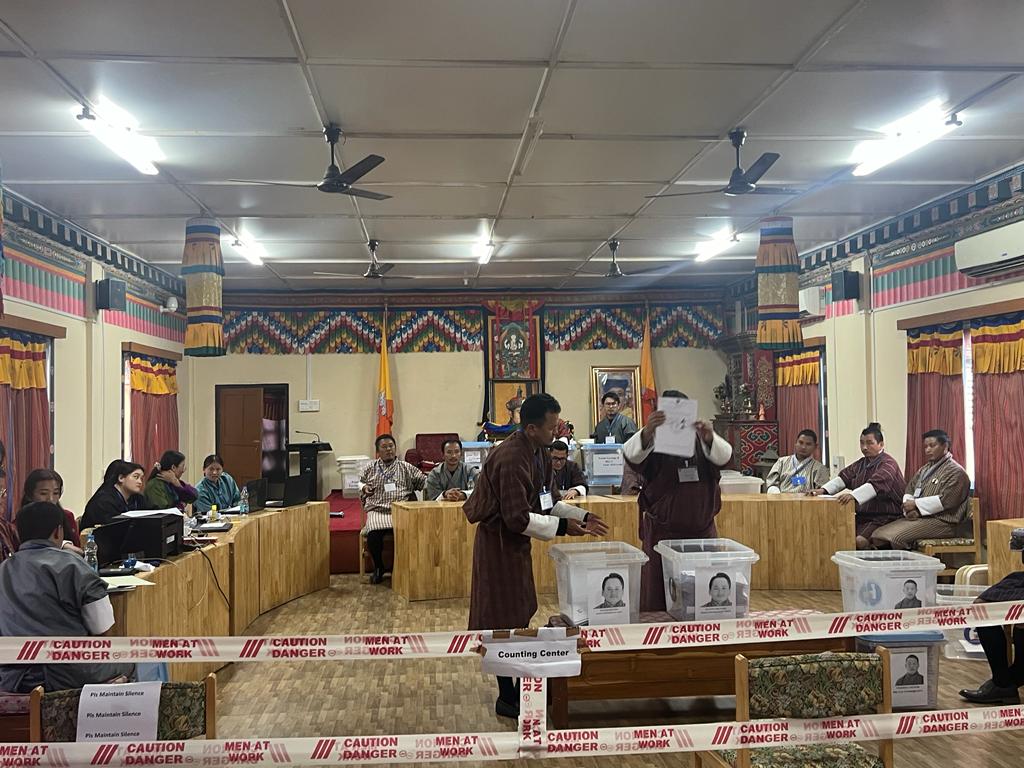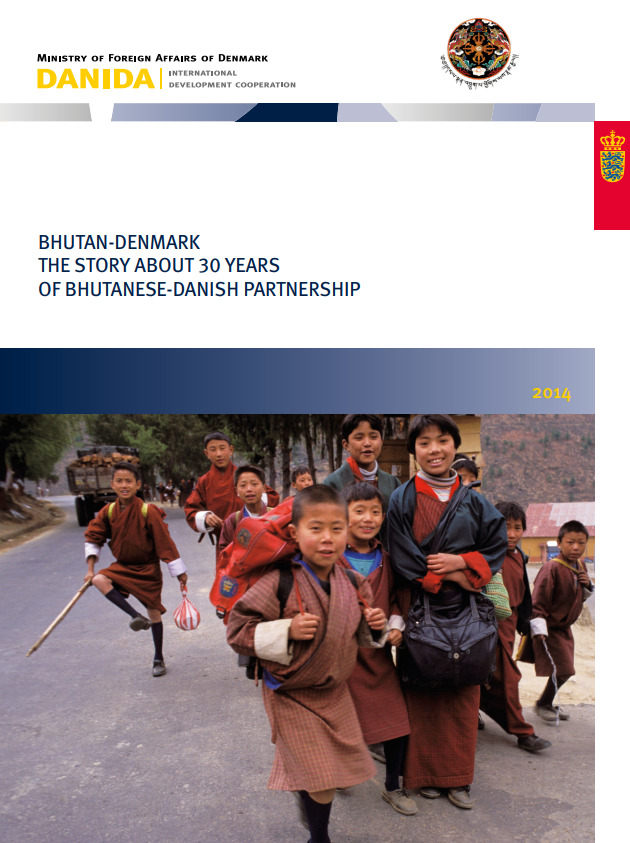Bhutan recently went through a successful democratic election. Unlike other parts of South Asia where vote-rigging, an unlevel playing field, and toxic bashing of electoral opponents’ plague elections, elections in January 2024 in the country were in general peaceful.
Squeezed between the two Asian giants, India and China, landlocked Bhutan with a population of almost 800,000 has been badly battered by the Covid-19 pandemic. Between 2018 and 2022, GDP growth averaged at 1.5 percent. Growth hit negative 10.1 percent in 2020 as the pandemic hit the country. Other economic challenges include a growing fiscal deficit and dwindling foreign currency reserves reaching $467.05 million in Autumn 2023. The mandate of the constitution demands a minimum threshold to meet the cost of one year’s worth of essential imports. The Autumn figure was very close to this threshold and required a ban on import of non-essential goods.
By extension, the exodus of Bhutanese to foreign countries, particularly Australia, for education, work, and employment has become a major problem and signals a crisis of the country’s economic model. After the economic downturn, Bhutanese leaving the country increased drastically, raising the fear of depopulation and brain drain. More than 50,000 young middle class have left the country in the last eight years, not least as a response to rising youth unemployment which has doubled from 11.9 percent in 2019 to an astonishing 28.6 percent in 2022. It is the skilled part of the workforce particularly health and education personnel who left the country. The exodus comes at a time when the country’s fertility rate has dropped to 1.8 births per woman in 2022 from 6.6 births per woman in 1971 and half of the country’s population is under 30 years old.
Unemployment has become a major problem, and the private sector is experiencing stagnation with many companies either closed or experiencing reduced capacity. One out of eight live in poverty. The new government led by People’s Democratic Party (PDP) stressed that public confidence has hit rock-bottom, and people are losing hope, and the nation is facing a grave existential crisis.
The new government will have to finalise and implement the 13th five-year plan, by far the biggest in the country’s history. It is 165.16 percent bigger than the 12th five-year plan, and most of the Nu 512 billion needs to be mobilised from foreign sources. The PDP has acknowledged that its responsibilities are enormous. The party made 13 pledges, promising to fix the economy, promote private business, increase job opportunities, revitalize the education and healthcare systems, uplift the power, empower civil servants, transform agriculture, and boost national revenue generation. What may be controversial is the proposal to establish special economic zones and casinos in the South.
Specifically, PDP has promised to double Bhutan’s GDP by $5 billion, create 10,000 jobs annually, increase the manufacturing sector’s contribution to GDP from 6 to 30 percent, and increase foreign direct investment (FDI) from $500 million to $6 billion during its term in office. These are very ambitious targets.
Regional politics becomes an emerging issue
The new government headed by Harvard educated PM 58-year-old Tshering Tobgay will have to create gainful economic opportunities and jobs, not only to retain residents in the country but also to lure those living and working abroad back home. In early March, Bhutan unveiled a 15 billion Bhutanese Ngultrum (Nu) economic stimulus package, with India’s backing, which is aimed at alleviating economic slowdown in key sectors such as tourism, technology, and small enterprises.
Economic recovery and related issues were at the heart of the manifestoes of all the parties but there was a sharp difference between voters’ preference in the eastern and western regions. It stood out starkly from the election that the regional divide among voter’s is a cause for concern. From a total of 17 constituencies in the six eastern districts, BTP, whose president, Dasho Pema Chewang, comes from the east, won in 16 constituencies, losing only one constituency to PDP. In contrast, PDP swept the western, southern, and central regions with BTP only winning one constituency from three districts of central Bhutan, while the rest of the constituencies went to PDP whose president comes from the west. PDP won 30 seats while BTP won 16 of its 17 seats in the Eastern region.
Analysts say that, in the race to elect a prime minister from their region, people from the east voted out three former ministers and several former senior civil servants from PDP who could become ministers in the new government. Three constituencies in the eastern Trashigang district that PDP won in the primary round voted for BTP in the general election. Bhutan has twenty districts.
There is now a real possibility of the whole of the eastern region being left without any minister in the government, and without a single MP in the governing party. The cabinet ministers are usually appointed from different constituencies spread across different regions of the country. In the last government, the eastern region had three cabinet ministers but, in a bid, to elect a government led by a prime minister from the east, the region seems to have lost both the government and ministerial positions.
The stark regional divide highlighted by the voting pattern has raised concerns. Dividing the small country along regional and ethnic lines, referred to as ‘regionalism’ in the political parlance, is cautiously prevented to the extent that political candidates avoid the topic. Together the Ngalop, who live in the western parts of the country, and the Sharchops, who are based in the East, comprise 63 percent of the population. Most observers refer to the Ngalop Dzongkha speakers as the elite in Bhutan, while the Sharchop and other ethnic groups are less fortunate. This implies that there is both a social and identity related conflict or what people from BTP call a regional bias in development in the country. The east is emptying out since people migrate to the west, quality of infrastructure is bad However, one prominent political observer Wangcha Sangey stated:
“I like being Bhutanese and love Druk Yul (Bhutan). I am happy and content and feel most free in living at Thimphu among all you Eastern people. I do not know about other Dzongkhags but Haa, Paro and Thimphu combined have more Sharchops than one Eastern Dzongkhag (region). Why creep about facilities when it is for all Bhutanese to use? Do you ever pause and think about unity.”
This regional divide is important since the opposition party DTP’s won an overwhelming victory in the Eastern region. It is attributed to economic backwardness since most of the development and economic activities are concentrated in the Western region. Most of the hydropower projects are also in the western side of Bhutan due to the geographical factor. Nevertheless, Prime Minister Tsering Togbay has dismissed this division saying that ‘We are one people in one country under one King’.
Foreign policy repercussions
Bhutan’s new Prime minister, Dasho Tshering Tobgay is widely perceived as more pro-India than his predecessor. After the election India’s support for Bhutan’s Five-Year Plan doubled from Rs 5,000 crores to Rs 10,000 crores. India and Bhutan exchanged several MoUs and signed agreements in the fields of energy, trade, digital connectivity, space, rail links and agriculture. When that is said Tobgay tweeted ‘‘Bhutan is open to Business’ which by some observers in India was interpreted as a ambiguous statement and might indeed also be an invitation to China for establishing diplomatic relations and preparing Bhutan to invite foreign investment from China. In addition, the government has rejected a proposal from India to construct a road through the country connecting two of India’s north-eastern states on the grounds that it might undermine Bhutan’s negotiations with China.
On a final note, India and China have been watching the election with keen interest as they eye strategic contested border zones. A cooperation agreement was signed between Bhutan and China in October 2023 after what was described as advanced talks over their disputed northern frontier. The implication has been alarming India, which regard Bhutan as a buffer state firmly under its orbit.
It is also worth mentioning that the new government will have to resume border talks with China. From what has been out in the media, it seems that China and Bhutan’s old friend, India, will accept a peaceful solution to the border issues, which may help Bhutan in its attempts to attract foreign investments.
In the months after the election, there have been a series of exchanges between the new PM Tobgay who travelled to India and India’s PM Modi who travelled to the Bhutanese capital Thimphu shortly after where he received Bhutan’s highest civilian award, acknowledging India’s support during the COVID-19 pandemic. This comes after the His Majesty Jigme Khesar Namgyel Wangchuck has travelled to India three times and held talks with diplomats and businesspeople.
The new government is facing numerous challenges ahead. The big remaining question is whether a renewed focus on growth may jeopardize GNH since the new government is regarded as liberal and more pro-growth than GNH. An observer Aditya Gowdara Shivamurthy notes that this position represents “a pragmatic tailoring of the GNH concept to what the world needs today,”






